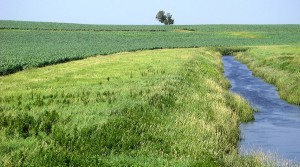
These are the slides, with active links to articles referenced, that were used in a presentation CleanWaterWarrior conducted to residents in Kewaskum, WI.
When clicked on, this Powerpoint file will be sent to your download folder.
Clean Land. Clean Water.

These are the slides, with active links to articles referenced, that were used in a presentation CleanWaterWarrior conducted to residents in Kewaskum, WI.
When clicked on, this Powerpoint file will be sent to your download folder.
According to a July 29, 2015 AP from release from The Blade newspaper out of Toledo, OH, toxic algae blooms are reappearing as expected in Lake Erie, and the usual suspects are believed to be the cause: climate change, combined sewage overflows, malfunctioning septic systems, and agricultural runoff.
So which of these sources is likely to be the greatest contributor to the problem?

Research suggests that agricultural runoff — when manure spread on fields or in barns flows into lakes, rivers and streams after rains or thaws — is by far the largest source. Over 60%, according to this recent article from Scientific American.
Something can be done — such as assisting farmers in implementing better land management practices — to curb this harmful, toxic runoff. And it must. Preferably sooner than later.
There is no question that farm runoff, and the nitrogen and phosphorus that go with it into rivers and streams, is a primary contributor to the toxic algae that is destroying precious surface water resources.

The fixes to this problem are known, but implementation is slow and often viewed as expensive. The latter position a highly debatable one.
Not so as is being shown in Iowa, where contributions from The Walton Family Foundation — in cooperation with the Iowa Soybean Association — are being used with the goal of reducing runoff by 45% over the next 20 years.
Our opinion is that, once the clean-up strategies are put into place, runoff will be reduced at an even swifter pace — all while profits for farmers increase. Truly a win-win scenario for all involved.
I was speaking with a farmer in WI recently — a man well-known for his innovative practices as an organic operator for over 30 years. We discussed land management and farm runoff, and safeguards against having that animal waste empty into the rivers and streams which eventually lead to the algae blooms seen in so many areas around the USA.
His quick comment?

“Just feed the animals the grass you grow, along the waterways, to keep the runoff from reaching the water.”
Pretty simple, but not always easy to implement when a farm is struggling to maximize its revenue. Why grow grass, for example, when corn is so much more lucrative?
Practically speaking, without sufficient long-term financial incentive to manage land to avoid waste runoff, best practices will almost certainly not be followed universally.
The encouraging word? Best practices are known — and they work!